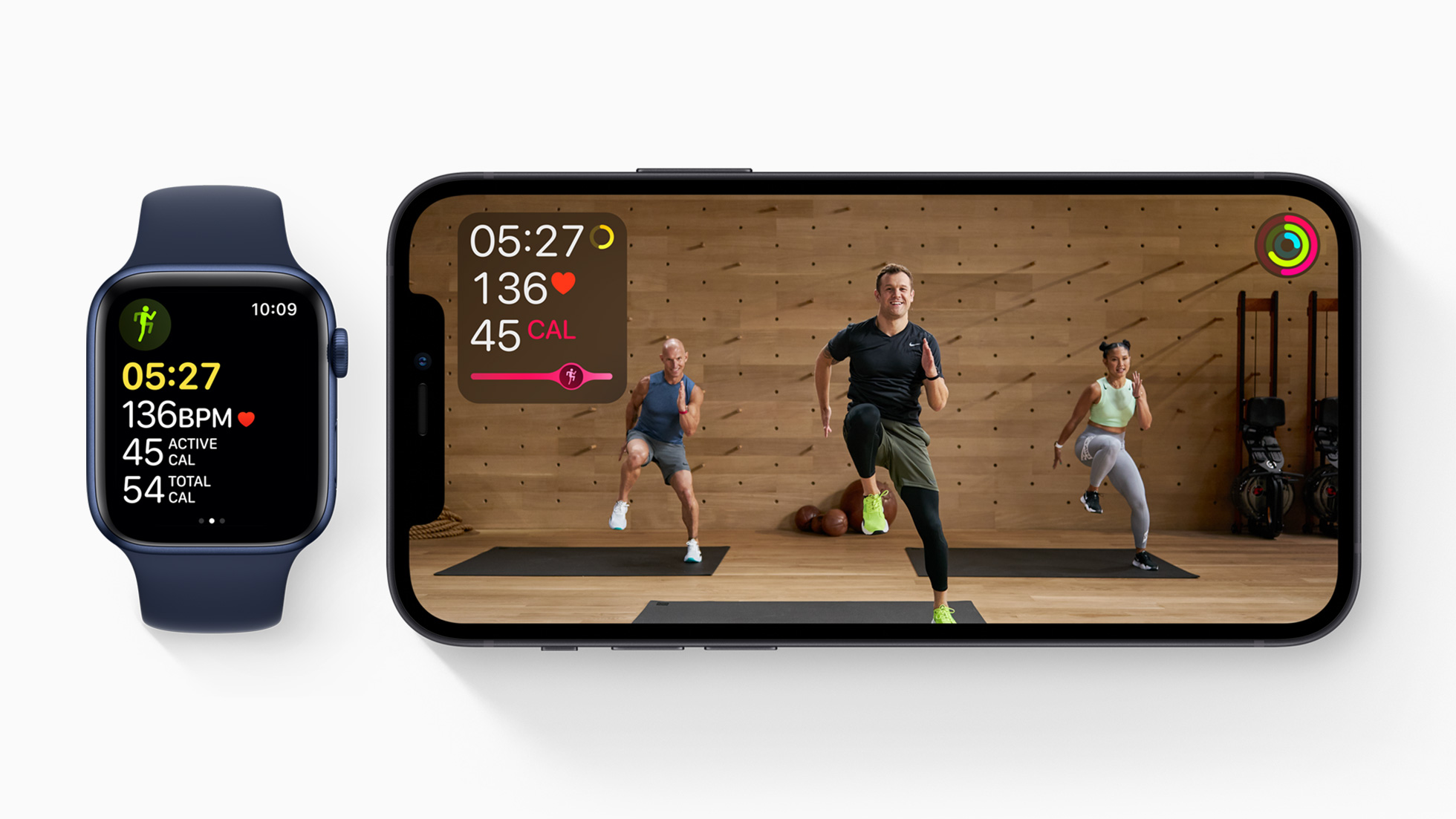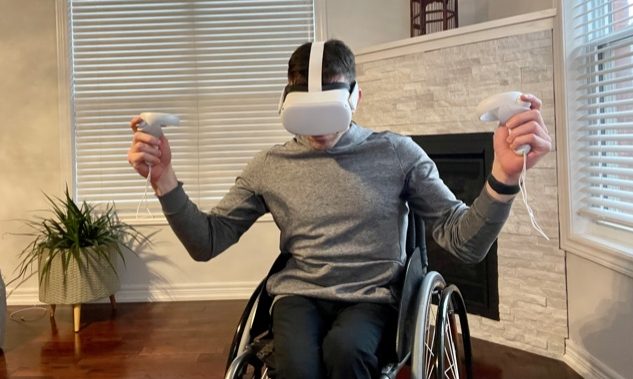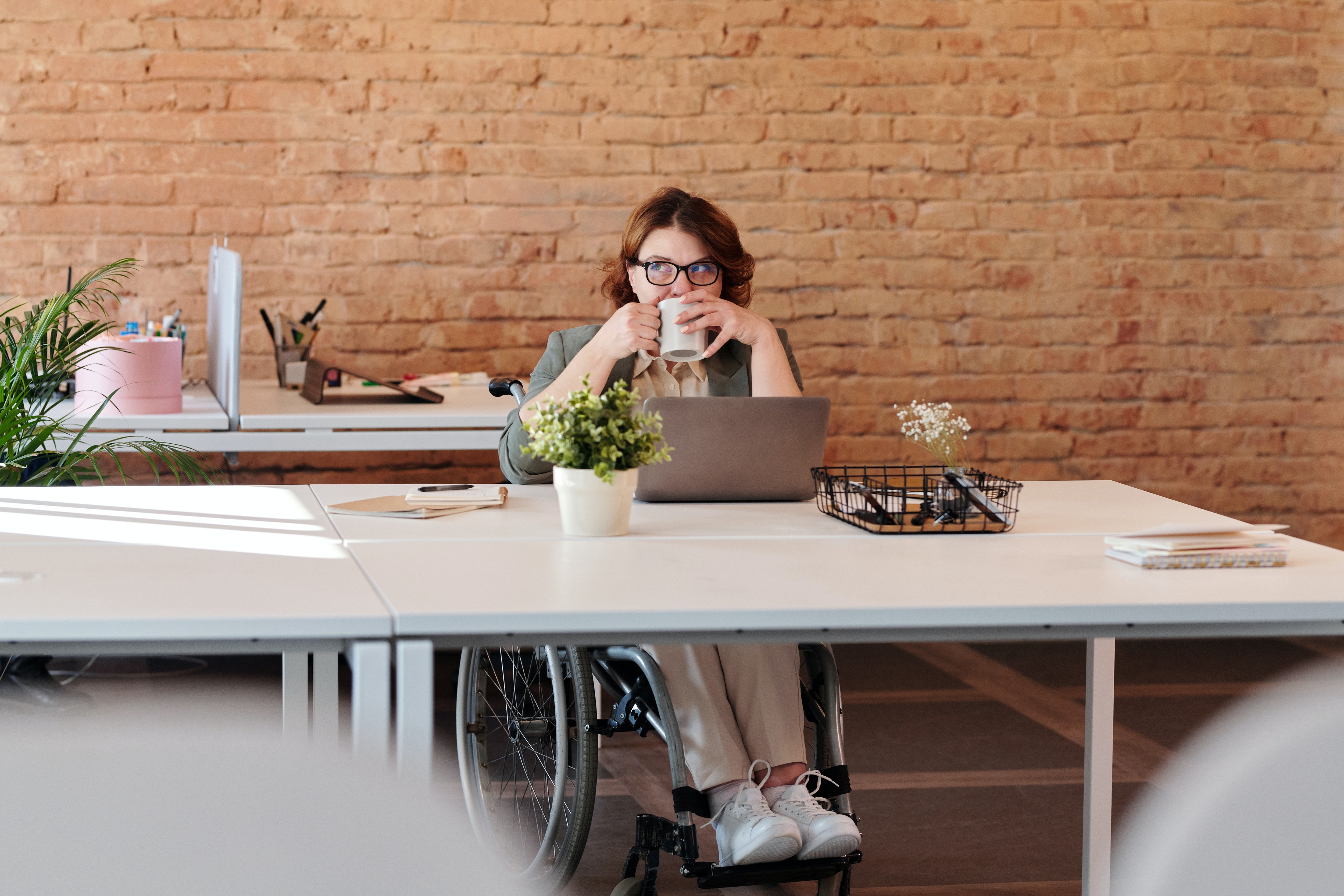These five inclusive apps will help transform your body (and mind) in 2021
By Joel Dembe
No question about it, 2020 was a difficult year. The pandemic sent many of us into a spiral of isolation and perpetual anxiety. While 2021 is certainly off to a challenging start, there’s optimism that soon, we’ll return to some form of normalcy.
If the past 10 or so months have taught me anything, it’s that we should focus on the things we can control – namely our body and our mind. With many community centres, fitness studios and rehabilitation clinics closed – we’ve had to adapt our health routines to this new reality. While the warmer months allowed for Canadians to explore trails and swim in lakes, winter has put the dampener for many to stay active – especially for those with physical disabilities.
Luckily, technology has played a critical role in keeping us healthy while isolating safely at home. The popularity of digital health and workout apps has boomed over the past year. Even the Peloton went from an expensive (and criticized) gimmick to a global phenomenon in a matter of months.
However, for those just starting their workout journey, including people with disabilities, the number of apps and services offered on Apple and Android smartphones can be slightly confusing. At the very heart of this confusion is whether they are accessible and easy to use. Using a wheelchair myself, I tested out these apps (and a device) to see how they integrated with my abilities. In short, if they work for me, they can likely work for everyone!

12.99 per month or $99.99 per year (CAD)
If attending fitness classes was a regular part of your weekly social routine, you’ll love Apple’s new guided-video streaming workout service. Apple Fitness+ launched last month, the perfect time to reset your New Year’s goals into 2021. Best of all? It’s great for beginners of all abilities.
The Fitness+ trainers are a diverse, inclusive and approachable team made up of people with their own unique and inspiring story, including one that happens to use a prosthetic leg.
I’ve already found some great workouts using my wheelchair, namely strength training focusing on upper-body muscles with Kyle and cycling workouts with Tyrell using my hand-bike ergometer. While the service requires an Apple Watch (Series 3 or higher), you’ll be able to track your activity in real-time on screen. Each workout includes a trainer demonstrating how to properly position yourself (or the equipment you have) to ensure that you’re set-up correctly.
While not every workout offered in Apple Fitness+ needs in-home equipment, a number of them do require dumbbells, a stationary bike and either a rowing machine or a treadmill. However, if you don’t have any of these devices on-hand, you’ll still find great sessions in the core, dance and yoga workouts.
Free, Available on Android or iOS
A free alternative to Apple Fitness+, Nike Training Club offers guided training exercises, nutrition advice and expert help. Best of all? You’ll have access to 215 free workouts targeted towards strength, endurance and mobility.
Because my exercises typically revolve around my upper-body (arms, shoulders and back), I found it easy to select workouts by muscle group. Many of the workouts can be done sitting or standing as well. Workout sessions range from 15 – 45 minutes, with a number of low to high intensity options.
The app also integrates with your iPhone or Android phone, in addition to your Apple Watch, where you’re able to track your active calories in real-time. Nike Training Club works best for those who want to focus on strength and core exercises. However, if you’re a runner, the Nike Run Club (downloaded separately) will probably be your best option for cardio workouts.

69.99 USD per year
If you’re like me, you often wake up anxious, worried about the latest political crisis or presentation at work. That’s where Headspace comes in handy Sometimes, you just need to breathe, relax and focus. That’s the core of Headspace, a unique digital health and wellness experience that encourages you to pause, meditate, sleep, move and focus. Used by athletes, business leaders and politicians, Headspace is the perfect antidote for stressful times.
No matter what your abilities are – everyone should find a way to slow down and relax. Guided by Andy Puddicombe, a former sport science major who eventually became a Buddhist monk, the app is easily one of the most unique experiences I’ve ever had. I only wish I started my meditation journey back in my Paralympic days!
I’ve made it a morning routine to pop-in my headphones and spend 20-minutes exploring the different meditation courses and techniques. Just find a quiet, comfortable space to yourself (if that’s at all possible) and choose how you’re feeling on that day. Some of my personal favourites are: dealing with distractions; grieving; and navigating change.
Free
Losing weight is never easy. But MyFitnessPal makes the process easier by tracking your eating habits and workout activities using your smartphone device. The app is especially great for users who do not own an Apple Watch or a similar activity tracker.
I found a number of adaptive and inclusive activities to track in the diary feature, from adaptive ergometer exercises to wheelchair basketball. There are hundreds of activities you can log that give you a fairly accurate reading of your active calories burned over a given time. The app also features workouts for beginners, along with a fantastic blog that includes delicious (and healthy) recipes that are easy to make at home.
While there is a premium monthly version of the app that offers a number of advanced features, including a customized dashboard and food-nutrient analysis, I found the free version to be perfectly fine for beginners to experienced athletes alike.

Oculus Quest 2 Virtual Reality Headset
$459 CAD / Apps sold separately
For those of us that might be sick of the same monotonous indoor routine, the newly-released Oculus Quest 2 offers immersive, video-game style workouts in virtual reality. The system is currently sold out nearly everywhere across Canada, and the cost is high, but it’s probably the most fun I’ve had staying active indoors in a long time.
There are a number of fitness apps (sold separately) that you can download directly to the device, from boxing to table tennis, that are completely immersive. So immersive, in fact, that I accidentally fell out of my wheelchair (twice). My handy tip is to find a bigger space, especially if you happen to use a mobility device like I do.
And while not every app will be appropriate for all users, I found Beat Saber and FixXR to be the best for all types of users. FitXR is pretty similar to Apple Fitness+ (you can even wear your Apple Watch) in that it’s truly a social experience. None of the classes I participated required any equipment, besides the Oculus system itself.
Virtual Reality still has a long way to go to be truly accessible for wheelchair users like me, but I’ve been enjoying the experience so far. I can’t wait to see what’s in store in the future.

Joel Dembe is a Paralympian, public speaker and global advocate for accessibility and inclusion. He was Canada’s top-ranked wheelchair tennis player (2011-2015), winning more than thirty titles internationally.














